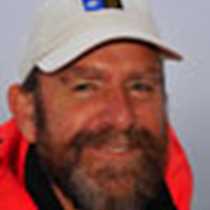Inverness, Culloden & Loch Ness, Scotland
Most of us survived the multiple tribulations of international travel, to arrive last night, exhausted but triumphant, in Inverness. This attractive seaside town lies on the nape of Scotland: Inbhir Nis in Gaelic, the mouth of the River Ness, where it flows out into the Moray Firth. Our ship, Lord of the Glens, was waiting patiently at the top of the Muirtown Locks, at the start (or end) of the Caledonian Canal. After a four-course welcome supper, we slept well on comfortable bunks, stationary at last.
To our delight we woke to a second day of blue skies, and set off at once for the battlefield of Culloden, 5 miles east of Inverness, site of the last battle on British soil, fought between two British armies, inspired by a foreigner. Though it took place over 260 years ago, the results still reverberate down through history and are not forgotten by the clans of Scotland.
In 1745, 24-year old Bonnie Prince Charlie, grandson of the exiled King James VII, though he had lived all his life in Italy and France, returned to Scotland to rally support for the Catholic Stuart cause. Within 6 months he had raised an army of 5,000 Highlanders keen to overthrow the protestant King George II. On the jumbled boggy plain at Culloden, they met the government army, a trained militia of 9,000 infantry, cavalry and artillery.
Charging across the broken terrain, the Highlanders were cut down in droves by steady artillery and musket fire which within 45 minutes had destroyed the Jacobite uprising and the Highland hopes of the “Young Pretender.” The modern interpretation centre recreates the entire event with film, an aerial display of the battle events, and the voices of eyewitnesses who wrote first-hand accounts of the day. It is a moving resurrection of “the ‘45” as it is still known here in Scotland.
After a brief visit to 4,000-year old Bronze Age cairns at Clava (where the first farmers created gigantic burial mounds within a ring of tall sandstone monoliths) we returned through Inverness, past the beautiful red sandstone castle, and upstream along the River Ness to where the ship waited.
Once aboard we set off immediately along Loch Dochfour, the first of a necklace of four extended lakes (lochs in Gaelic) which run from Inverness southwest to Fort William. These mark the ancient scar of a massive tear fault 380 million years ago which dislocated the rocks across the entire width of Scotland. Giant glaciers during the ice ages of the last million years then gouged deep along this diagonal scar, creating a long valley and the record-breaking depths of Loch Ness, at almost 1000’ deeper than the North Sea which separates us from Norway.
We will be following this old route by ship, the lochs now linked by the genius of Thomas Telford who built the Caledonian Canal in the early 1800s to create a ship passage between the North Sea and the Atlantic.
From Loch Dochfour we steamed out into Loch Ness and south past Urquhart Castle, all eyes peeled under for any Loch Ness monster lured to the surface by the glittering sunshine. Nothing! But within two hours we had traversed this legendary loch, and tied up within the Fort August locks where we moored for the night.
There was time for a 3-mile walk, out of the village, along a bouldery river with kingfishers, past an ancient graveyard and back along oak and lime-lined trackways to the old Abbey and Fort at the southern end of Loch Ness.
Two days of sunshine and we are already deep into the Scottish Highlands. The gods are smiling on us as we make our way down the Great Glen, an expedition which will take us from the golden barley fields and rolling hills of Inverness, to the towering rugged mountains of Fort William and the windblown wilderness of the Western Isles.




